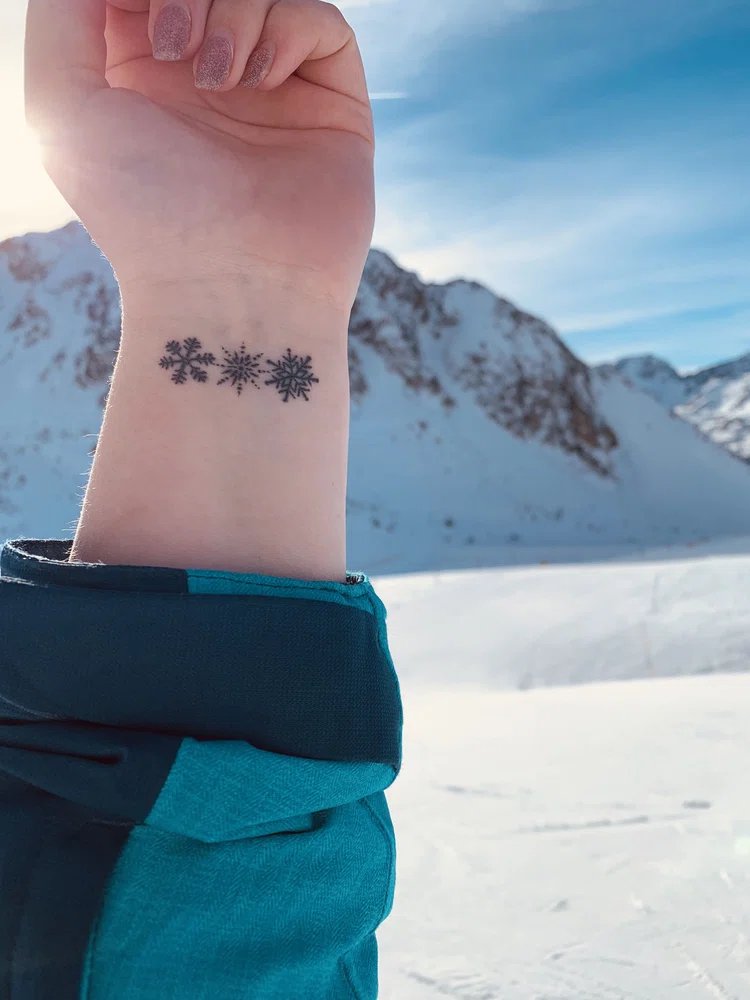With the cold, the modalities of work change and, above all, the healing processes of the tattoos.
Carrying out good healing and permanent care guarantees that a tattoo lasts over time in the best possible way.
It is often said that there are more positive than negative reasons to tattoo in winter. But is this true? Let's clear up some doubts.
Tattoo care
As an artist, you must know what the healing process of tattoos is like.
In the tattoo, a good finish is the responsibility of a good healing process, since it is at that moment that the ink will finish “sealing” on the skin.
The good aging of a tattoo is the consequence of constant care. This is why knowing all the healing stages is essential to transmit them to your client.
As we mentioned here: How to care for a tattoo? Tattoos heal in several stages.
The first days are when there is more swelling and elimination of fluids, the itching, which for many is the most annoying part of all. Finally, the final weeks are when the dead layers of skin are shed, and the skin regenerates.
At each stage, different products should be used. For example, film to cover the first 24 hours, soap to wash and disinfect, ointments for the following days, etc.
And good disinfection, together with the correct sterilization of the materials, among other factors, will guarantee the reduction of the chances of infections.

Benefits of tattooing in winter
According to the opinion of many artists, tattooing in the winter months can be one of the best options since the levels of exposure to certain situations that are very harmful to the tattoo drop significantly. These are:
- It perspires less. Some irritations are often due to sweat and the itching that this can produce. In the latter case, it could lead to infections if the necessary precautions are not taken.
In turn, less perspiration allows the tattoo to dry better and not be excessively hydrated, which can play against healing.
Ideally, temperatures should be kept below 30 °C.
- There is less sun exposure. There is nothing more terrifying than exposing newly made tattoos to the sun. This is a great enemy of the skin and especially of tattoos.
The sun's rays can cause itching, swelling, and redness and contribute to infections.
In addition, it makes the colors oxidize and lose strength more quickly in the long run.
In winter, using warm clothes and dark colors contributes to a reasonable control of sun exposure time, which is a benefit.
- Less exposure to water. In summer, being in contact with swimming pools and seawater is almost unavoidable, but they harm a freshly made tattoo.
If a tattoo stays wet too long in its healing process, it can develop a “soft scab”, which prevents the tattoo from healing properly. Moreover, this can lengthen the healing process.
In turn, seawater is completely abrasive and harmful to the tattoo. Many people believe that salt water has benefits, but not for our tattoos.
On the other hand, in winter, unless it is a swimmer, we only expose ourselves to water when entering the bathroom, which gives some guarantee that all this does not happen.
Some cons
However, some situations that are not entirely recommended regarding tattoos with low temperatures may arise.
- There are more frictions. By wearing more clothes, friction becomes inevitable; we know this is something to be alert to.
The more contact with clothing, the more itching, the more opening of wounds, and even the more infections can occur.
For this reason, it is recommended to wear cotton clothing and, whenever possible, keep the tattoo uncovered to favor its oxygenation.
- Greater dryness on the skin. It is recommended to hydrate the skin in the cold months since it tends to be drier and cut.
Remind your client of the importance of care before the session; otherwise, you can cause serious injuries when passing the needles.
It is essential to work on hydrated skin and maintain this same care after the session.
- Decreased hydration. Hand in hand with the above, water intake is one factor that affects dryness.
High temperatures can help you to drink water more frequently. This is not the case in winter.
So, what is the best time to tattoo?
Although we have detailed some cons when tattooing in winter, the truth is that there are many more benefits.
The probabilities of risks tend to drop significantly compared to summer, where carelessness tends to be more prone.
However, you have to take certain precautions and not trust yourself completely.
For this reason, the key is that you, as an artist, know the healing process to guide your client with the best recommendations.
Remember that in winter, the skin is drier, so it becomes essential that both you and your client hydrate the area to be tattooed.
Would you like to face the next winter with an arsenal of new tricks?
There's nothing better than summer to expand your tattoo training!
Take advantage of those slow seasons with our professional tattoo courses.